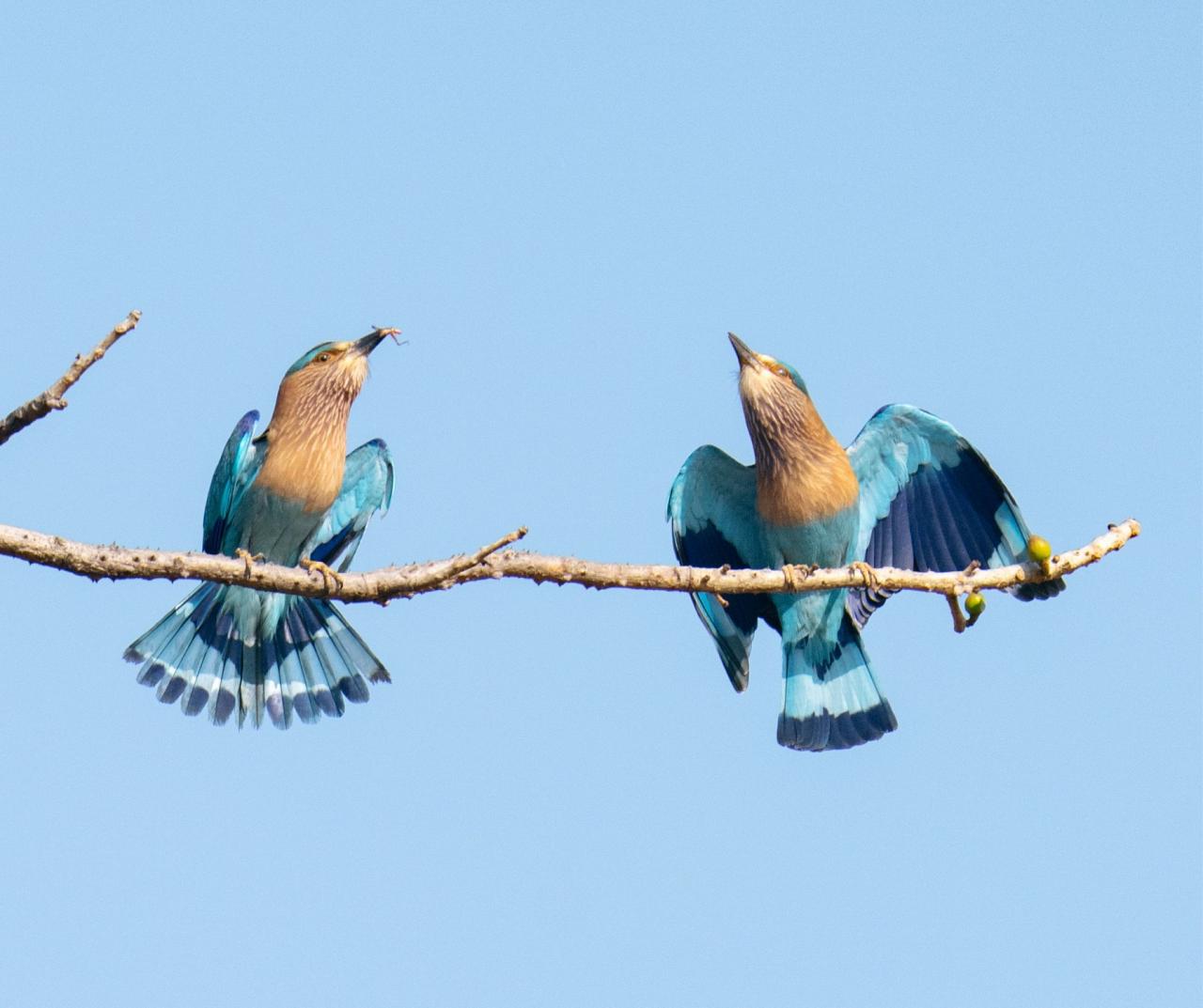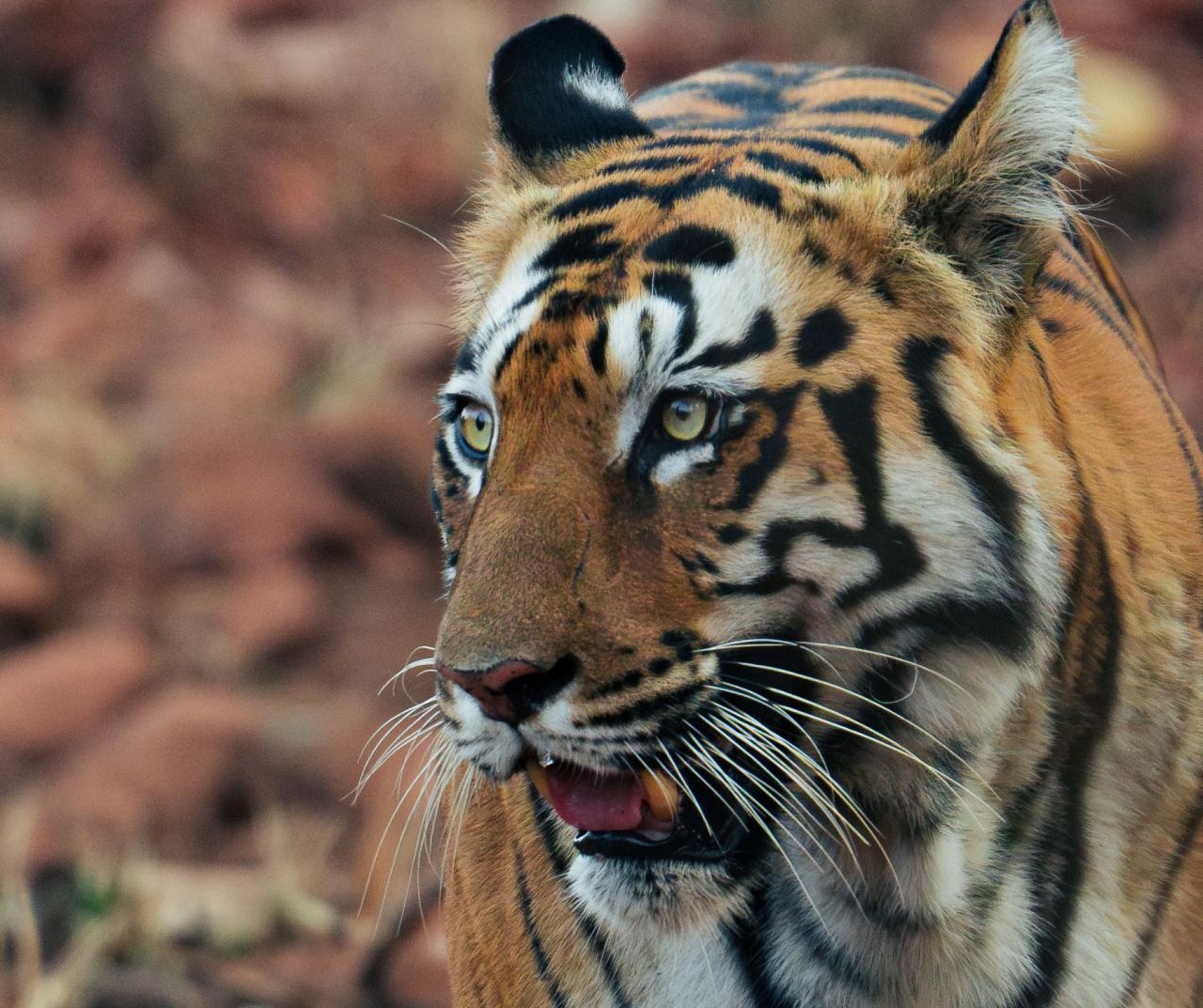- Overview
- Full Itinerary
- Extensions
- Photo Gallery
- Costing
- Travel Details
- Trip Reports
- Guides
- Map
- Know Before You Go
India is an incredible place to find wild cats — of the 37 wild cats in the world, it’s possible to find 15 in India! Four of these are big cats: Bengal Tiger, Asiatic Lion, Common Leopard, and Snow Leopard … wow! These four big cats still roam wild in some of the most beautiful and diverse landscapes of India and our tour strives to find these big four, as well as the amazing Pallas’s Cat on an exciting extension. We also hope to find Jungle Cat and Rusty-spotted Cat (the smallest wild cat)! India offers an incredibly biodiverse selection of mammals and birds, and we traverse many inspiring landscapes as we travel a large section of India.
Our big cat search begins at the Tadoba Tiger Reserve in the center of the country, where we take several safari drives through the rich woodlands and grasslands. This is quite possibly the best place in India to see tigers. We also hope to find Common Leopard, Asiatic Sloth Bear, Indian Wild Dog, Asiatic Jackal, and Rusty Spotted Cat! We then move to the Gir Lion Sanctuary in the far western corner of the country where we search for prides of Asiatic Lion and Common Leopard, as well as Jungle Cat and a number of ungulates including the largest deer of India, the Sambar. Then it’s up into the Himalayas, far to the north of New Delhi for the cat of a lifetime—Snow Leopard. We work with local spotters to increase our chances of sightings of the leopard as well as Himalayan Gray Wolf, Red Fox, Himalayan Ibex, Ladakh Urial, and interesting birds like Himalayan Snowcock, Chukar, Lammergeier, Himalayan Vulture, Golden Eagle, Saker Falcon, White-browed Tit Warbler, Streaked Rosefinch, Twite, Red-fronted Serin, and many, many more.
Throughout our tour, we not only experience a wide variety of the sights, sounds, smells, tastes, and landscapes of India, but also collect an impressive bird and mammal list along the way!
Tour Highlights
- Search for four stunning big cats: Bengal Tiger, Asiatic Lion, Common Leopard, and Snow Leopard!
- Watch for four exciting small cats: Jungle Cat, Rusty Spotted Cat, Eurasian Lynx and Pallas’s Cat (extension only)
- Spot three possible species of wolf … Indian Gray Wolf, Himalayan Gray Wolf and Tibetan Gray Wolf!
- Witness an amazing number of birds, including endemic and regional specialties birds in four very different parks and ecosystems
- Stare off to the Trans-Himalayan mountains from your park lodge porch
- Explore two great river ecosystems, the Indus and the Zanskar
Trip Itinerary
Itineraries are guidelines; variations in itinerary may occur to account for weather, road conditions, closures, etc. and to maximize your experience.
Mon., Mar. 9 Arrivals in New Delhi
Welcome to India! You are met on arrival at the airport and are transferred to our nearby hotel. As the group arrives, we assemble for dinner to get to know each other and our guides. New Delhi is the busy and vibrant capital city of India! Some may wish to arrive early to rest up from travel and see cultural highlights of the city; if so we can help you with plans and ideas to explore.
Accommodations at The Roseate House or similar (D)
Tue., Mar. 10 New Delhi to Nagpur
We depart early this morning to catch a flight to Nagpur; this is a short flight, about an hour and a half. After landing we drive for about three hours to our lodge in Tadoba. Our lodge is situation just minutes from the gate to Tadoba Tiger Reserve, so we are well situated to start our exploring in search of Tigers.
We settle into comfortable, air-conditioned rooms and gather together for dinner after time to freshen up.
Accommodations at The Svassara Jungle Retreat (B,L,D)
Wed., Mar. 11 - Fri., Mar. 13 Three Full Days in Tadoba Tiger Reserve | Safari Drives
We enjoy early morning and afternoon safari drives in open 4x4 jeeps. The park is about 1,700 sq kms and it is divided in four zones that are open to tourists.
The park is home to Tigers, Indian Leopards, the rare and severely endangered Indian Wild Dog, Asiatic Jackal, Jungle Cat, Sloth Bear, the endemic hard-ground Swamp Deer, Sambhar, the largest wild bovid—Indian Gaur, Bengal Fox, herds of Spotted Deer, Wild Boar, and other mammals. Tadoba Tiger Reserve hosts mixed forest habitat with teak trees and natural forest interspersed with natural lakes. The reserve is also home to over 275 species of bird like the Crested Hawk Eagle, Crested Serpent Eagle, Mottled Wood Owl, Scarlet Minivet, Brown-cheeked Fulvetta, Paradise Flycatcher, Red Spurfowl, Greater Racket-tailed Drongo, endemic Indian Scimitar Babbler and Gray Junglefowl, and others.
Our simple but well-appointed lodge is located near to the park in a natural forest with a number of birds on the grounds. It is one of our favorite lodges for the trip. The rooms are spacious and air conditioned and the lodge has a pool, which is a welcome amenity in this hot climate. Within the lodge grounds we can see a number of birds (which keeps us busy over lunch). The lodge employs and engages with the local community with active participation from the manager and his wife and the naturalists. Svassara has running hot water, laundry facilities, and for those who need to get in touch with their family and friends there is an area that is equipped with wi-fi. Svassara serves a mix of Indian and continental cuisine (and can manage special dietary needs for those who need it). We gather for meals in a lovely dining area adorned with local art and furnishings. A fireplace is lit up in the evenings and everyone gathers around to share conversation and learn from each other over tea and drinks.
Accommodations at The Svassara Jungle Retreat (B,L,D)
Sat., Mar. 14 Tadoba Tiger Reserve | Nagpur | Velavadar
Today is largely a reposition day. We first enjoy one last early morning safari at Tadoba before the three-hour drive to Nagpur airport from where we take a morning flight to Ahmedabad. On arrival depart for the Velavadar grasslands where we look for Indian Gray Wolf, Striped Hyena, and Jungle Cat, along with endemic Indian Blackbuck and Indian Bluebull. A number of interesting and rare birds like the Greater Hoopoe Lark, White Stork, White-browed and Stoliczka’s Bushchats, Marshall’s Iora, Syke’s Lark, Montague’s Harrier, and more are expected in this area. We may do our safari before checking into our lodge near the park.
Accommodations at Blackbuck Resort or similar (B,L,D)
Sun., Mar. 15 Velavadar Grasslands
We awake bright and early to enjoy a safari in Velavadar and then after brunch we can enjoy a quiet free afteroon before an optional late afternoon safari (added cost). The flat, dry grasslands here are ideal for grazing animals, with a thriving Blackbuck population. Additional species we may encounter include Nilgai (blue bull), wolves, jungle cats, and various bird species, including harriers, pelicans, and flamingos.
Accommodations at Blackbuck Resort or similar (B,L,D)
Mon., Mar. 16 & Tues., Mar. 17 Gir Lion Sanctuary
This morning we head to the Gir Lion Sanctuary, a 4 – 5 hour drive. Once we’re there we settle into our lodge and if time allows, we take an afternoon safari into the sanctuary. Otherwise, we enjoy a bit of birding in the near and surrounds. Our second day here, we enjoy morning and afternoon jeep safaris to the sanctuary. Our prime goal is finding the Indian Lion prides and the Asiatic Leopards. However we would be remiss to not search for Asiatic Jackal, Jungle Cat, Nilgai, Sambar, Spotted Deer, and other forest denizens. The lakes inside the park have a number of Marsh (Mugger) Crocodiles and we hope to see them while we are inside the sanctuary. We seek out some special birds including Mottled Wood Owl, Marshall’s and White-tailed Ioras, beautiful Yellow-footed Green Pigeon, Rufous-tailed Lark, Changeable Hawk Eagle, and other interesting species. Enjoy the lodge amenities between the safaris and of course enjoy the gastronomy of the region in the lodge.
Travel Tip: The entire state of Gujarat is a dry state but fortunately tourists are allowed to enjoy their alcohol but with a permit, which our leader will arrange and explain.
Accommodations at The Gir Woods at Sasan or similar (B,L,D)
Wed., Mar. 18 Gir | New Delhi
We leave Gir after brunch (in case we could not do the first safari when we arrived in Gir, we do a morning safari today). Today is mostly a travel day. We catch the flight to New Delhi and on arrival drive to our hotel near the airport for a bit of rest and relaxation.
Accommodations at the Roseate House or similar (B,L,D)
Thurs., Mar. 19 New Delhi | Leh
We leave our hotel early and head to the airport, ready for the high Himalayas. We fly to Leh today, a city in the territory of Ladakh at an elevation of 11,500 feet. There are gorgeous mountain views from the flight. We land in Leh and meet our team there to drive to our base for the first two nights.
The rest of the afternoon is spent simply admiring the scenery, resting, and acclimatizing before our search for Snow Leopard, known as the Grey Ghost of the mountains.
Accommodations at Hotel Rewa Ladakh or similar (B,L,D)
Fri., Mar. 20 Leh
Today is more of a relaxing day to acclimate to the altitude and ensure we are hydrating and getting some rest. In the morning, we visit the Thiksey Monastery, situated on a hilltop just outside the city of Leh. It is often referred to as the ‘Little Potala Palace’ due to its resemblance of the iconic monastery in Tibet.
This afternoon we enjoy a bit of birding near the Indus River. Birds in this area include Himalayan Buzzard, Eurasian Goshawk, Himalayan Griffon, Ibisbill, Cinereous Tit, and White-winged Redstart.
Accommodations at Hotel Rewa Ladakh or similar (B,L,D)
Sat., Mar. 21 Leh | Sham Hills
We start our two-hour drive to our base today, at an elevation of 13,700 feet. We leave early as we want to be there when the spotters are still out looking for Snow Leopards. We reach our hotel base and check in to the nicely heated rooms. If our spotters have already found a Snow Leopard on the ridge we join them immediately in the field. If not, tea, coffee, and cookies arrive and we settle in and enjoy lunch. After a bit of rest we resume our search with our spotters. If conditions are cold, we return early and snuggle into our comfortable beds (with hot water bags, twin duvets and a heated room). Dinner is served shortly and we sleep comfortably in our ensuite rooms.
Accommodations at Shan at Uley Lodge or similar (B,L,D)
Sun., Mar. 22 — Tues., Mar. 24 Sham Hills
We start our days early; normally the spotters are out earlier and they inform us of any sightings through radio communication. Mid-day, we enjoy lunch with local and continental delicacies. After that we are out again for a short walk that takes us to the field where we join the scanners. Once a Snow Leopard is sighted, scopes are aligned on it and the viewing starts. Snow Leopards do not move a lot in the day heat and hence once it has been found, normally we are able to watch them for a while.
Meanwhile we also look for Ibex, Ladakh Urial, Blue Sheep, and other mammals and some interesting birds like the Red-fronted Serin, Horned Lark, Golden Eagle, Lammergeier, Himalayan Vulture, the rare White-browed Tit-Warbler, and other wildlife.
This is our pattern each day. We typically take a break for lunch either at the lodge or in the field. After that we are out in the shade or the sun – typically till 1730 – 1800 hours. Our main aim is to find the Snow Leopards, but we also look and discuss the incredible geology and rock formations. We also look at a few plants – in particular the Sea buckthorn bushes that are edible to humans and other species.
Accommodations at Shan at Uley Lodge or similar (B,L,D)
Wed., Mar. 25 Back to Leh
For smoother departures tomorrow, we head back to Leh today after we enjoy lunch. It's about a two-hour drive, but we can make birding and wildlife-viewing stops along the way. We arrive to our hotel, check in, and enjoy a relaxed final evening as we recount our favorite sightings of the trip.
Accommodations at Rewa Ladakh, Shing Nang Premier (B,L,D)
Thurs., Mar. 26 Leh Airport | New Delhi | Departures or Extension
Our main trip ends today. Those of us who are heading home leave early back to Leh in time for the flight to New Delhi and then from there they fly home. Those staying on for the extension have the day to enjoy optional wildlife sightings, a market visit, or simply enjoy a quiet afternoon at the hotel. (B)
Pallas's Cat Post-Tour Extension
Itineraries are guidelines; variations in itinerary may occur to account for weather, road conditions, closures, etc. and to maximize your experience.
The eastern Ladakh extension is a treat for those who wish to add a few nights more and see more wildlife, possibly the most stunning landscape of Ladakh and amazing star gazing! Hanle is home to some of the most amazing mammals — the cutest and the grumpiest wild cat — the Pallas’ Cat is found in the marshes of Hanle hunting voles and little mouse hares. The Tibetan Wild Ass or Kiang is found in good numbers as well their main predator — the Tibetan Gray Wolf. The bizzare looking Tibetan Sand Fox and the Red Fox are present here, too, and the elegant and rare Tibetan Gazelle! A short distance from here one can expect to see the largest wild sheep of India the Argali. Bird highlights include the Eurasian Eagle Owl, Upland Buzzard, Saker Falcon, Common Kestrel, Little Owl, Pallid Scops Owl, Horned and Tibetan Lark, Hume’s Groundpecker, and few more.
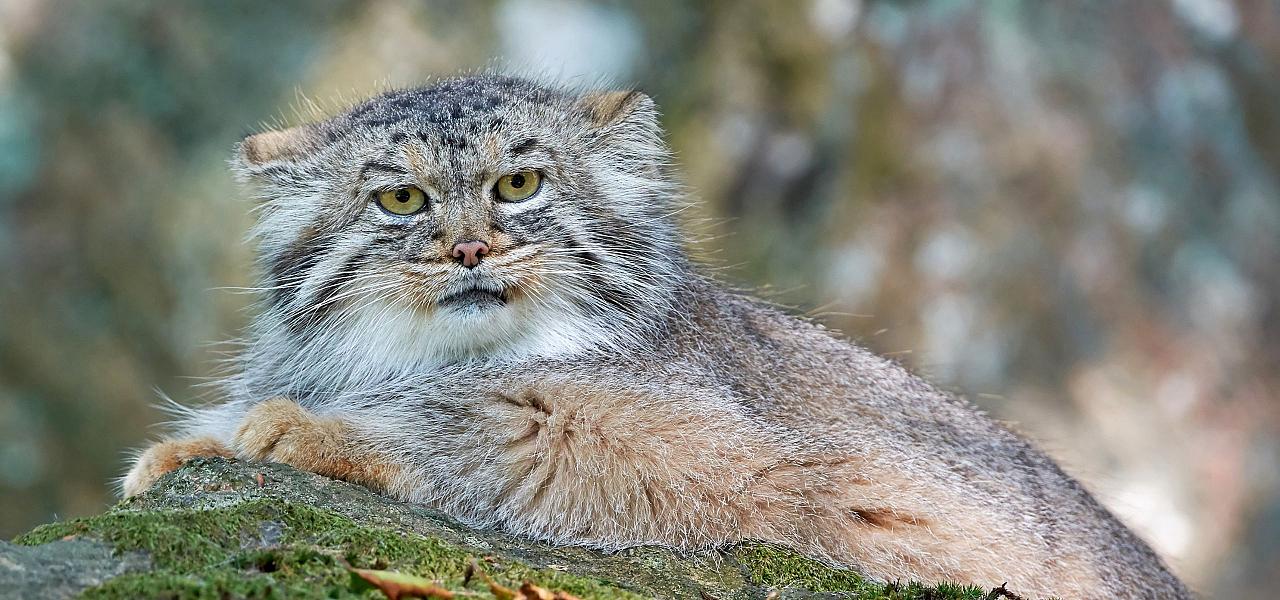
Thurs., Mar. 26: Leh
Those who have stayed on for the extension have another night in Leh today. We have an optional outing depending on what the spotters have found, which could include Snow Leopard, Lynx, and local birds. The other option, which many from past tour have chosen to do and have thoroughly enjoyed is simply relaxing at the hotel or taking a trip to the market to shop for treasures to take home.
Accommodations at Rewa Ladakh, Shing Nang Premier (B,L,D)
Fri., Mar. 27: Leh to Hanle
We depart our hotel early this morning for a long drive through the most incredible landscape to eastern Ladakh. Our base is Hanle, a high arid plain with marshes that support some of the most fascinating mammals on the earth. We pass through Leh and keep following the Indus upstream and eventually leave it at a place called Mahe – then we enter some stunningly colored landscape and we try to reach a particular place just before sunset to ensure we can scan for the Pallas’s Cat in that area before heading to our base in Hanle.
We have kept the drive on this date for a reason – the day before is the full moon and the last phase of our drive is through the most incredible moonlit Himalayan landscape that you can ever imagine. We reach our base and get in to our heated rooms, enjoy our dinner, and get some sleep.
Accommodations at Hanle Homestay or similar (B,L,D)
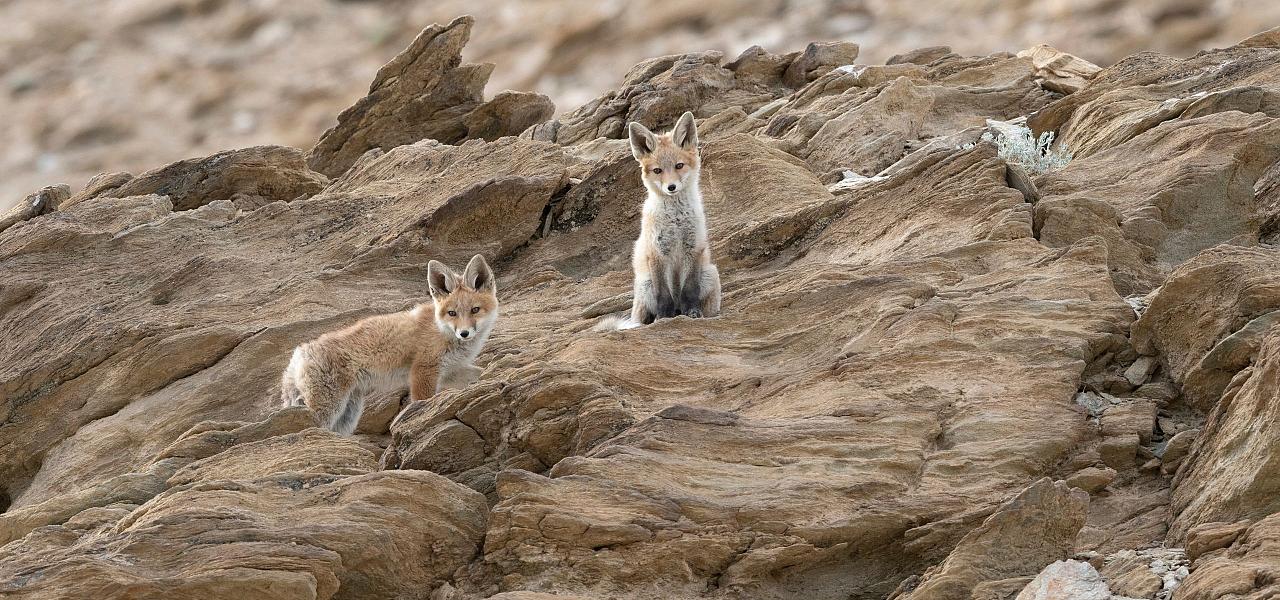
Sat., Mar. 28 – Mon., Mar. 30: Hanle
We are up around 6:00 AM, followed by a ritual of getting a bucket of hot water from our crew. This is then followed by hot breakfast with local Ladakahi butter tea, apricot juice, sea buckthorn juice, fresh roasted barley, boiled apricots and some local breads and eggs. Then we head out in the very cold plains looking for the Pallas’s Cat, Tibetan Sand Fox, Tibetan Gray Wolf, Tibetan Wild Ass and birds like Eurasian Eagle Owl, Saker Falcon, Groundpecker, Little Owl, and more. We look for the Tibetan Argali and extremely rare birds like the Tibetan Lark and the Mongolian Short-toed Lark.
This area can be very cold – temperatures drop to -25 degrees Celsius here and when it is windy the temperature drop can be up to 10 degrees Celsius very quickly, so proper cold-weather clothing is a must. We enjoy enough hot drinks to make us feel warm but the right winter gear and being able to cope with conditions is a must.
Accommodations at Hanle Homestay or similar (B,L,D)
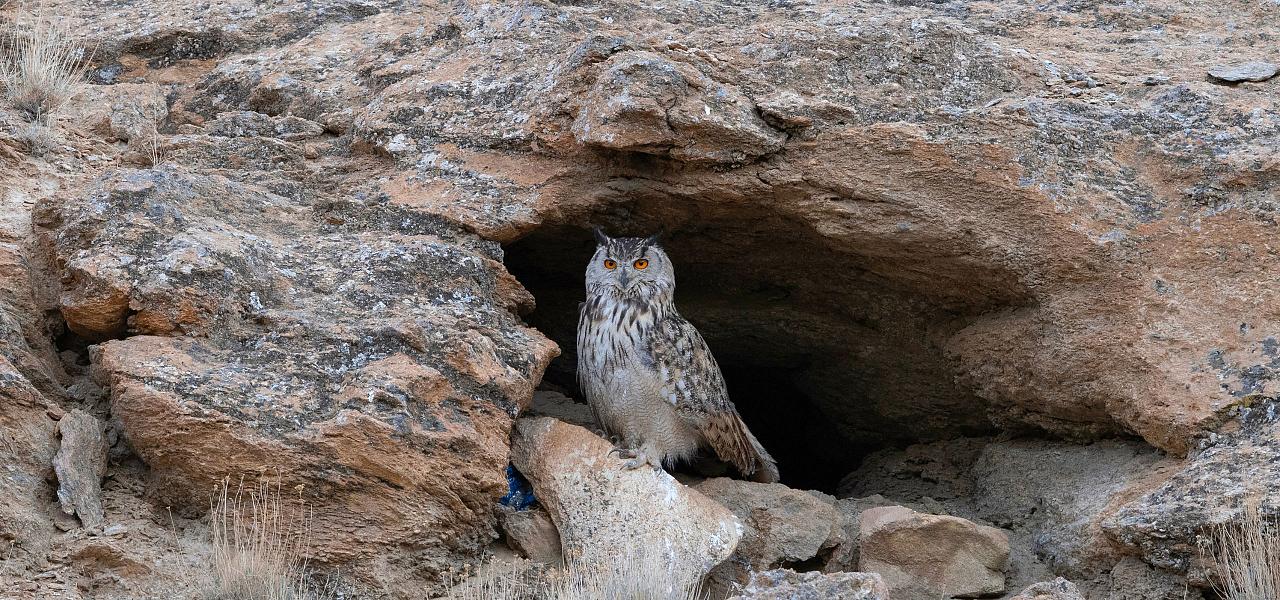
Tues., Mar. 31: Hanle | Leh
We are up early today for our drive back to Leh, arriving by 1600 hours and settling into our comfortable hotel. We enjoy a special dinner tonight.
Accommodations at Rewa Ladakh or similar (B,L,D)
Wed., Apr. 1: Leh | New Delhi | Departures
We leave the hotel and are driven to the airport after breakfast for our afternoon flight to New Delhi. You can connect to your international flight home from here. (B,L)
Cost of the Journey
The cost of the journey is per person, based on occupancy: $11,900 DBL / 13,995 SGL, from New Dehli. Cost includes all accommodations; all meals as stated in the itinerary; group airport transfers; ground transportation; professional guide services; park, preserve, and other activity fees; and miscellaneous program expenses. Internal flights are included in the cost of the tour.
NEW! all tips other than your NJ guide (optional) and local guide are included (this includes tips for your driver, lodge and staff, day activities, meals and other services).
Tour price does not include: roundtrip airfare to and from New Dehli, or items of a personal nature such as laundry, telephone charges, or alcoholic beverages.
Cost of the extension is $3,790 DBL / $4,615 SGL with 4 or more participants.
Travel Details
Please plan to make air travel plans only after the minimum group size has been met. We will send you a confirmation email as soon as the trip has been confirmed.
Arrival and Departure Airport: Indira Gandhi International Airport (DEL) in Delhi, India
Arrival Details: Plan flights to arrive on March 9, 2026, no later than 5:00 PM in order to join the group dinner
Departure Details: Plan flights to depart March 26, 2026, after 7:00 PM. Note that we have an afternoon flight from Leh to Delhi on our last day of the tour.
Post-Tour Extension Departure Airport: Indira Gandhi International Airport (DEL) in Delhi, India
Post-Tour Extension Departure Details: Plan flights to depart April 1, 2026, after 7:00 PM. Note that we have an afternoon flight from Leh to Delhi on our last day of the extension.
Travel Tips: If you arrive early to rest up from your travels or explore Delhi, we can book you an early night at our first night tour hotel, the Roseate House Hotel, near the airport. The hotel cost is approximately $280-300/night. A transfer from the airport to the hotel, if you arrive early, will cost about $45/transfer. The hotel is located in the Aerocity area near the airport and has many restaurants and shops.
If you are interested in a sightseeing tour of Delhi or a half day of birding, we can arrange for an additional cost for those who arrive early.
Getting There: Naturalist Journeys offers you the service of our travel agent, Becki Holt of Willamette Travel, to help you book your international flights.
Entry Requirements: See "Essential Information" section under the "Know Before You Go” tab.
Items of Note
This incredible journey does require travel to some higher elevations and participants are asked to consider their general fitness and tolerance for that and for cold, winter conditions while viewing in Snow Leopard habitats. Explorations in Gir, Velavadar and Tadoba are in safari jeeps and in Ladakh easy walking (with drives being in heated covered vehicles). Morning safaris in Gir and Tadoba are for 5 – 6 hours and afternoon safaris last about 3 hours. In Ladakh the explorations are all day with breaks for breakfast and lunch; hot meals are served in the locations.
Main Tour Pace: The main tour demands a fair amount of time in the open jeeps through the forests, which can be bumpy and dusty but allow for prime wildlife viewing. Due to predators being present, there is minimal walking so other than jeep-driving type of conditions, it is a fairly easy trip.
In Ladakh – we will be walking in cold weather at an attitude of 10500 feet – 13000 feet (approximately) but not for long. Our walks are mostly for about 15 – 30 minutes and then we will be back in the car. Participants should check with their doctor prior to the tour to discuss medication such as Diamox for high altitudes.
The pace of the tour is pretty relaxed but the safaris require early morning starts and normally the evening meals are done by 8:00 PM so you can get enough sleep each night. In Ladakh – we will allow as much acclimatization as possible to ensure that everyone is able to enjoy the trip.
Extension Pace: The extension demands a fair amount of walking, occasionally uphill or downhill, in cold weather. Normally we are out walking for 20 – 30 minutes and then back in the car, to be driven for a while and then again walk for a while looking for wildlife.
Browse below for trip reports and species lists from past versions of this and other tours from this destination.
India
- January 2006
- March 2012
- January 2020
- November 2023
- November 2024
- February 2025 (Big Cats)
-
Saurabh Sawant — India Expert
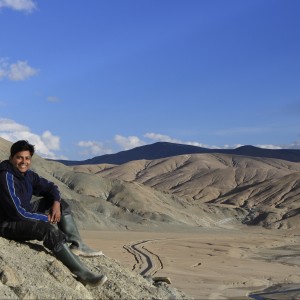
From the mangrove coasts to the icy Himalayas and remote Andaman Islands, Saurabh Sawant has spent nearly two decades exploring, documenting, and teaching about India’s extraordinary biodiversity. Recognized as one of India’s finest naturalists and a renowned wildlife photographer, Saurabh is also a conservationist, researcher, and educator. He has discovered and described new species and documented more than 1,200 bird species, along with elusive mammals and an incredible diversity of reptiles, amphibians, and insects.
Recipient of the Carl Zeiss Conservation Award (2015), Saurabh leads wildlife and photography tours for top national and international agencies, crafting journeys that combine awe-inspiring encounters with engaging insights into culture, ecology, and conservation.
Beyond guiding, he heads Sanctuary Nature Foundation’s conservation projects, serves as Projects Director at Rishi Valmiki Eco School, and integrates bioacoustics research as a Certified Sound Recordist (Cornell Lab of Ornithology). A prolific contributor to Sanctuary Asia and visiting faculty for the MSc in Biodiversity and Wildlife Conservation, he inspires travelers, students, and future conservationists alike.Other trips with Saurabh Sawant — India Expert
-
Peg Abbott

Peg Abbott is the owner and lead guide of Naturalist Journeys, LLC. She has been designing, guiding, and organizing natural history tours for more than 25 years, working for the National Audubon Society and other organizations before launching Naturalist Journeys, LLC in 1998. Her work has taken her from Alaska to Africa and Argentina, as well as many other locations around the world. She has conducted research on several bird and mammal species and keeps a close interest in Yellowstone and Mexican wolf reintroduction projects. Her interests include all aspects of natural history and geology. After 20 years in and around the Yellowstone area, Peg relocated in 2003 to the birding mecca of Portal, AZ.
Photo credit: Carol Simon
Other trips with Peg Abbott
-
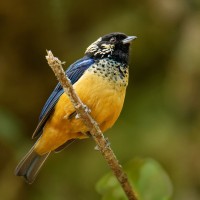 NEW! New Year at Tranquilo Bay FULL - See our Christmas Week at Trinidad's Asa Wright Nature Centre!December 30, 2025 - January 7, 2026, w/Mt. Totumas extension
NEW! New Year at Tranquilo Bay FULL - See our Christmas Week at Trinidad's Asa Wright Nature Centre!December 30, 2025 - January 7, 2026, w/Mt. Totumas extension -
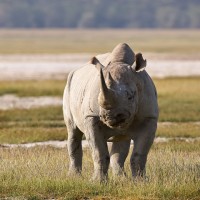 Tanzania: Wildlife & Birding Safari FULL - Ask us to put you on the list for 2027.February 9 - 22, 2026, w/Amboseli & Nairobi National Parks extension
Tanzania: Wildlife & Birding Safari FULL - Ask us to put you on the list for 2027.February 9 - 22, 2026, w/Amboseli & Nairobi National Parks extension -
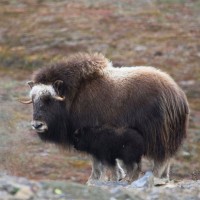 Nome Sweet Nome! FULL - Check out Alaska’s Northern Passages & Glacier Bay!May 28 - June 4, 2026
Nome Sweet Nome! FULL - Check out Alaska’s Northern Passages & Glacier Bay!May 28 - June 4, 2026 -
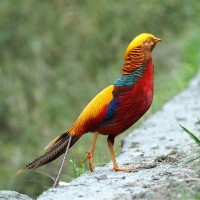 China’s Sichuan Basin & Tibetan Plateau FULL - Check out Thailand: Birding & Nature!June 11 - 26, 2026
China’s Sichuan Basin & Tibetan Plateau FULL - Check out Thailand: Birding & Nature!June 11 - 26, 2026 -
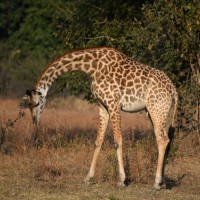 In-Depth & Incredible Africa: Botswana & Zambia FULL - See our Enchanting Okavango tour in August!July 9 - 27, 2026
In-Depth & Incredible Africa: Botswana & Zambia FULL - See our Enchanting Okavango tour in August!July 9 - 27, 2026 -
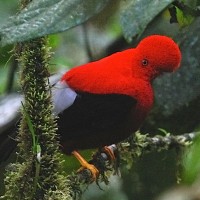 Peru: Cusco to Manú National Park A private tour for Tucson Bird Alliance - FULL!October 2 - 17, 2026, w/Machu Picchu extension
Peru: Cusco to Manú National Park A private tour for Tucson Bird Alliance - FULL!October 2 - 17, 2026, w/Machu Picchu extension -
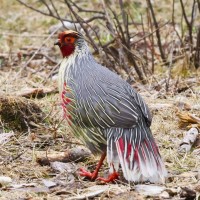 Biodiverse Bhutan: Birds, Mammals & BeyondNovember 6 - 21, 2026, w/Panna Tiger Reserve extension
Biodiverse Bhutan: Birds, Mammals & BeyondNovember 6 - 21, 2026, w/Panna Tiger Reserve extension -
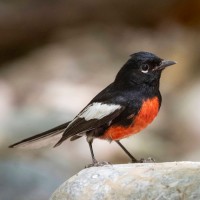 Arizona: New Year’s Birding Blitz December 29, 2026 - January 4, 2027
Arizona: New Year’s Birding Blitz December 29, 2026 - January 4, 2027
-
Essential Information +
Pace & Protocols +
Packing List +
Suggested Reading List +
Useful Links +
Photo credits: Banners: Bengal Tiger, Collared Scops Owl, Lammergeier, Leopard (Rajiv Gandhi via Creative Commons), Greater Racket-tailed Drongo, Sloth Bear, India Paradise Flycatcher (Kunalchak14 via Creative Commons) Thumbnails: Indian Roller, Bengal Tiger, India Paradise Flycatcher, Gray Junglefowl, Himalayan Snowcock, Butterfly, Indian Pitta, Rusty-spotted Cat


